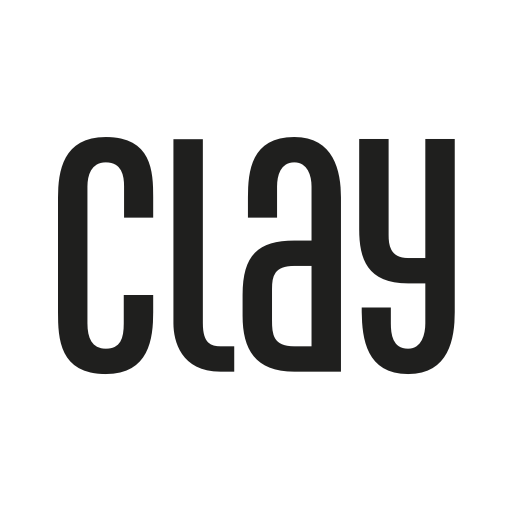In our digital age, the art of writing a thoughtful thank you note has become a powerful way to differentiate yourself and leave a lasting impression. Whether you’re expressing gratitude for a job interview, a client meeting, or a personal favor, a well-crafted thank you note can strengthen relationships and open doors to new opportunities. This guide will explore how to write thank you notes that truly stand out and make a memorable impact.
The Importance of Thank You Notes
Before diving into the how-to, let’s consider why thank you notes matter:
- Show Appreciation: Demonstrate genuine gratitude for someone’s time, effort, or generosity.
- Build Relationships: Strengthen personal and professional connections.
- Stand Out: In a world of quick emails and texts, a thoughtful note sets you apart.
- Leave a Lasting Impression: A well-written note can be remembered long after the interaction.
- Reinforce Key Points: Use the opportunity to reiterate important discussion points or your enthusiasm.
Key Elements of a Standout Thank You Note
1. Timeliness
- Send Promptly: Aim to send your note within 24-48 hours of the event or interaction.
- Why It Matters: Shows you value the interaction and are proactive.
2. Personalization
- Address Specifically: Use the person’s name and reference specific details from your interaction.
- Why It Matters: Demonstrates attentiveness and genuine interest.
3. Sincere Gratitude
- Express Genuine Thanks: Be specific about what you’re thankful for.
- Why It Matters: Shows you truly appreciate their time, effort, or gesture.
4. Specific Details
- Reference Key Points: Mention specific topics discussed or moments that stood out.
- Why It Matters: Reinforces the connection and shows you were engaged.
5. Forward-Looking Statement
- Mention Next Steps: If appropriate, allude to future interactions or collaborations.
- Why It Matters: Keeps the door open for ongoing communication.
6. Professional Tone
- Strike the Right Balance: Keep it warm yet professional.
- Why It Matters: Maintains appropriate boundaries while building rapport.
7. Proper Format
- Choose Appropriate Medium: Handwritten for personal touch, email for quick professional follow-ups.
- Why It Matters: The medium can enhance the message’s impact.
How to Structure Your Thank You Note
- Greeting:
Start with a warm, personal greeting.
Example: “Dear [Name],” - Express Gratitude:
Begin with a clear, sincere thank you.
Example: “Thank you so much for taking the time to meet with me yesterday.” - Specific Appreciation:
Mention what you’re specifically thankful for.
Example: “I particularly appreciated your insights on [specific topic] and your advice on [particular point].” - Impact or Value:
Explain how their action or advice has helped or will help you.
Example: “Your perspective on industry trends has given me a lot to think about as I develop my career plans.” - Looking Forward:
If appropriate, mention future plans or hopes to stay in touch.
Example: “I look forward to applying what I’ve learned and hope we can stay in touch as I progress in my career.” - Reiterate Thanks:
Close with another expression of gratitude.
Example: “Thank you again for your time and generosity. It truly means a lot to me.” - Closing:
End with a professional closing.
Example: “Sincerely,” or “Best regards,”
Sample Thank You Note
Here’s an example of how these elements come together:
Dear Sarah,
Thank you so much for taking the time to meet with me yesterday to discuss the Marketing Manager position at XYZ Corp. I was truly inspired by your vision for the company's future marketing strategies, particularly your emphasis on data-driven decision making.
Your insights into the challenges and opportunities in the current market landscape were incredibly valuable. I'm excited about the possibility of bringing my experience in social media analytics to contribute to your team's innovative approaches.
I was particularly intrigued by your mention of the upcoming product launch. It aligns perfectly with my background in new product marketing, and I'd be thrilled to have the opportunity to contribute to such an exciting project.
Thank you again for your time and consideration. I'm more enthusiastic than ever about the prospect of joining your team and contributing to XYZ Corp's continued success.
I look forward to hearing from you about the next steps in the process.
Best regards,
[Your Name]Tips for Making Your Thank You Note Stand Out
- Be Authentic: Let your personality shine through while maintaining professionalism.
- Use Quality Stationery: For handwritten notes, choose high-quality paper and pen.
- Keep It Concise: Aim for 3-5 sentences for email, slightly longer for handwritten notes.
- Proofread Carefully: Ensure there are no spelling or grammatical errors.
- Consider Timing: For job interviews, send a quick email thank you followed by a handwritten note.
- Add a Personal Touch: If appropriate, reference a shared interest or connection.
- Follow Up on Promises: If you mentioned sending additional information, make sure to do so promptly.
Leveraging Technology for Thank You Notes
While handwritten notes have a special touch, technology can enhance your thank you note process:
- Use Clay for Relationship Management:
- Keep track of interactions and key details to reference in your thank you notes.
- Set reminders to send timely thank you notes after meetings or events.
- Note preferences (e.g., communication style) to personalize future thank yous.
- Digital Handwriting Tools:
- Use tablets and styluses to create personalized, handwritten-style notes that can be sent digitally.
- Email Tracking Software:
- For important professional thank yous, use email tracking to ensure your note was received and opened.
Thank You Notes for Different Scenarios
After a Job Interview
- Focus on reiterating your interest and qualifications for the position.
- Reference specific discussion points from the interview.
After Receiving a Gift
- Express how you plan to use or enjoy the gift.
- Share why the gift is meaningful to you.
For Business Meetings
- Recap key points discussed and next steps.
- Express enthusiasm for future collaboration.
For Personal Favors
- Share how their help made a difference.
- Offer to reciprocate if an opportunity arises.
Common Mistakes to Avoid
- Generic Content: Avoid vague, one-size-fits-all language.
- Excessive Length: Keep it concise and to the point.
- Delayed Sending: Don’t wait too long to express your thanks.
- Overlooking Details: Double-check names, titles, and specifics.
- Being Too Casual: Maintain a professional tone, especially in business contexts.
Conclusion
In a world where digital communication is the norm, a well-crafted thank you note can set you apart and leave a lasting impression. By following these guidelines and infusing your notes with sincerity and personality, you can turn a simple gesture of gratitude into a powerful tool for building and nurturing relationships.
Remember, the key to a standout thank you note lies in its timeliness, personalization, and genuine expression of appreciation. Whether you’re fostering professional connections or nurturing personal relationships, mastering the art of the thank you note is a valuable skill that will serve you well throughout your career and life.
Utilize tools like Clay to help you manage your relationships and keep track of important details that can make your thank you notes even more impactful. With practice and thoughtfulness, your thank you notes will not only express gratitude but also open doors to new opportunities and deeper connections.

